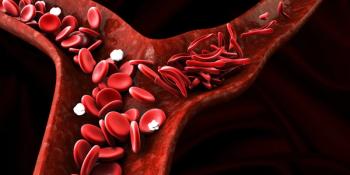
- July 2017 Dermatology Supplement 0
Identifying and Managing Fungal Skin Infections
Moist, warm skin provides the ideal environment for dermatophytes—fungi that cause skin infections—to flourish.
INTRODUCTION
Moist, warm skin provides the ideal environment for dermatophytes—fungi that cause skin infections— to flourish.1 Areas that have a tendency to trap moisture are particularly welcoming to fungi; these include in between the toes, in the genital area, and underneath the breasts.2
Fungal skin infections typically will not go away by themselves and may spread if not appropriately managed.1 Fungal skin infections are common worldwide diseases; an estimated 20% to 25% of the world’s population suffers from one of them.1 The most common infections in prepubertal children are ringworm on the scalp (tinea capitis) or the body (tinea corporis). In adolescents and adults, the most common infections are jock itch (tinea cruris) and athlete’s foot (tinea pedis) (figure).3
Fungal skin infections are more likely to develop in people living in tropical climates or who wear tight, nonbreathable clothing. Obese individuals or persons with diabetes also are at higher risk.1
ATHLETE’S FOOT (TINEA PEDIS)
What Is It?
Athlete’s foot, the most common fungal skin infection, occurs when feet perspire and warm moisture accumulates, especially on the skin in the areas between the toes.4 The genus Trichophyton, a fungus, is the most common cause. Risk factors include wearing tight shoes or exposing one’s feet to the floors of communal showers or bathrooms where others walk barefoot.2 The 3 most common presentations are interdigital, moccasin, and inflammatory.1
Signs and Symptoms
Interdigital: The most common type of athlete’s foot, it typically occurs between the toes. The skin there may peel, crack, or become red and itchy.1
Moccasin: This form thickens the skin on the sole and sides of the foot. The thickened skin becomes dry and may crack.1
Inflammatory: Less common than the other forms, this type typically presents as fluid-filled blisters, possibly uncomfortable or painful, on the bottom of the feet. They may also appear between the toes, on top of the foot, or on the heel.1
Treatment
Athlete’s foot is generally well managed with topical antifungal creams, such as terbinafine or butenafine. Patients who are predisposed to severe forms of athlete’s foot should consult a physician about taking oral medications such as itraconazole or terbinafine tablets. Susceptible patients include those who have the moccasin or inflammatory presentation, are unresponsive to topical treatment, or have diabetes.3,4 See table for more medication information. To help eliminate the infection and prevent recurrence, patients should wear wide, permeable footwear, frequently change socks, and manually dry the skin in between the toes after bathing.3,4
JOCK ITCH (TINEA CRURIS)
What Is It?
This fungal skin infection involves the upper inner thighs and usually occurs in young males in whom moisture tends to accumulate between the scrotum and thigh. Though jock itch may occur on 1 or both sides of the thighs, the scrotum is minimally affected.3 Trichophyton is the most common cause of jock itch. Risk factors include living in a warm climate, often wearing moist or tight clothing, and being obese.2
Signs and Symptoms
Jock itch presents as a rash with a scaly, pink border, which may become itchy and painful.2 To distinguish jock itch from erythrasma, a bacterial skin disease, a clinician may perform a test called a Wood’s lamp examination; erythrasma, but not jock itch, will produce a coral red fluorescence.3
Treatment
Jock itch is managed with topical antifungal creams, lotions, or gels, such as terbinafine, ketoconazole, miconazole, clotrimazole, naftifine, and potentially ciclopirox.2,4 Patients who do not respond to these medications or have inflamed, widespread infections should consult a doctor about taking oral medications such as itraconazole or terbinafine tablets (table).2
BODY RINGWORM (TINEA CORPORIS)
What Is It?
Body ringworm can form anywhere on the skin and spread to other body parts, and to other people in close bodily contact with the original patient. Fungi such as those in the genera Trichophyton or Microsporum typically cause this infection.4
Signs and Symptoms
Body ringworm presents as pink or red patches that have scaly borders and a clear center. These “rings” generally range from 1 cm to 5 cm in width, but can be larger. Body ringworm— sometimes itchy or uncomfortable—may be mistaken for other dry-skin conditions such as eczema or psoriasis. To determine the diagnosis, a clinician can examine a sample of infected tissue treated with potassium hydroxide preparation under a microscope, looking for the telltale fungus.3
Treatment
For mild to moderate body ringworm, treatment involves topical anti-fungals such as ciclopirox, naftifine, or terbinafine. 4 Patients who do not respond to these treatments or have other debilitating diseases should consult a physician about taking oral medication such as itraconazole or terbinafine tablets (table).2
SCALP RINGWORM (TINEA CAPITIS)
What Is It?
Highly contagious, scalp ringworm most commonly occurs in children, particularly children of African heritage aged 3-9 years.3, 4 Trichophyton fungus causes about 95% of cases.3
Signs and Symptoms
Early signs include a dry, itchy rash on the head. Sometimes, there may be patches of hair loss or flaking that resembles dandruff. The classical presentations of scalp ringworm, however, are “black dot”—in which hair shafts break at the scalp surface—and “gray patch”—in which hair shafts break above the surface, leaving short stubs.2,3
Scalp ringworm may progress to form a kerion—a large, swollen, painful patch that crusts and oozes pus. Kerions develop when the body’s immune system reacts to the fungus and tries to attack it.4 The infected patient may also present with swollen, enlarged lymph nodes, a factor that helps clinicians differentiate scalp ringworm from other dry skin conditions.1,3
Treatment
Scalp ringworm must be treated with systemic anti-fungal medications because topical, external options will not penetrate the hair shaft.1,3 Systemic options include terbinafine (better for those infected with Trichophyton) or griseofulvin (better for Microsporum).5 Patients who are not documented with Trichophyton and develop a kerion must be promptly treated with griseofulvin; failure to do so may result in scarring or hair loss.3 A short course of a corticosteroid like prednisone is appropriate for severe lesions or kerions.4
Along with taking medication, patients must wash with 1% or 2.5% selenium or 2% ketoconazole shampoo at least twice a week to reduce transmission. While children may attend school during treatment, imidazole or ciclopirox cream should be applied to their affected scalp areas to minimize the chance of infecting others.4
WHEN SHOULD A PATIENT TALK TO A DOCTOR?
While over-the-counter topical antifungals are appropriate first choices for mild skin infections known to be fungal, an affected patient should contact a physician if adverse effects are noted, if symptoms have not improved after the recommended treatment duration (typically 2-4 weeks), or if there is any doubt about the nature of the infection. A physician may perform examinations to confirm or change the diagnosis, and, if necessary, prescribe stronger oral antifungal medications or anti-inflammatory corticosteroids. Patients with diabetes or another immunocompromising condition should speak with a physician before initiating any antifungal treatment.6-11
REFERENCES
1. Salmon N, Fuller C. Fungal skin infections: current approaches to management. Prescriber. 2013;24(9):31-37. doi: 10.1002/psb.1046.
2. Aaron DM. Overview of fungal skin infections. Merck Manual Consumer Version website. www.merckmanuals.com/home/skin-disorders/fungal-skin-infections/ overview-of-fungal-skin-infections. Updated April 2017. Accessed June 15, 2017.
3. Ely JW, Rosenfeld S, Seabury Stone M. Diagnosis and management of tinea infections. Am Fam Physician. 2014;90(10):702-710.
4. Aaron DM. Overview of dermatophytoses. Merck Manual Professional Version website. www.merckmanuals.com/professional/dermatologic-disorders/ fungal-skin-infections/overview-of-dermatophytoses. Updated April 2017. Accessed June 15, 2017.
5. Elewski BE, Cáceres HW, DeLeon L, et al. Terbinafine hydrochloride oral granules versus oral griseofulvin suspension in children with tinea capitis: results of two randomized, investigator-blinded, multicenter, international, controlled trials. J Am Acad Dermatol. 2008;59(1):41-54. doi: 10.1016/j.jaad.2008.02.019.
6. Terbinafine hydrochloride cream [package insert]. Parsippany, NJ: Novartis Consumer Health, Inc; 2008.
7. Lexicomp Online database. https://online-lexi com.proxy.libraries.rutgers.edu/ lco/action/doc/retrieve/docid/patch_f/750. Accessed June 7, 2017.
8. Butenafine hydrochloride cream [package insert]. Whitehouse Station, NJ: Bayer HealthCare LLC; 2017.
9. Miconazole nitrate cream [package insert]. Sarasota, FL: WellSpring Pharmaceutical Corporation; 2010.
10. Clotrimazole cream [package insert]. Woonsocket, RI: CVS Pharmacy; 2013.
11. Naftifine hydrochloride cream [package insert]. Hayward, CA: Impax Generics; 2017.
Lydia Chou, PharmD, is a graduate from Rutgers University’s Ernest Mario School of Pharmacy.
Articles in this issue
over 8 years ago
Novel Therapies in Atopic Dermatitisover 8 years ago
Contact Dermatitisover 8 years ago
Topical Corticosteroidsover 8 years ago
Management of Acne VulgarisNewsletter
Stay informed on drug updates, treatment guidelines, and pharmacy practice trends—subscribe to Pharmacy Times for weekly clinical insights.


















































































































































































































